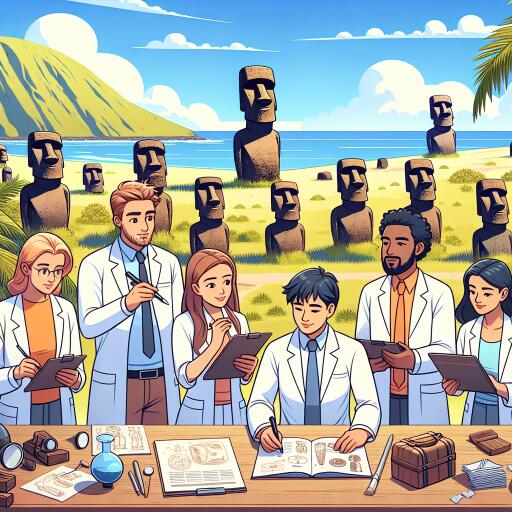
Scientists debunk popular myth of Easter Island
Long-standing myths surrounding Easter Island’s past have recently been challenged by groundbreaking research, offering new insights into the island’s ecological history. Contrary to the widely held belief that Easter Island endured a significant population decline due to resource mismanagement, cutting-edge analysis suggests a different narrative.
The mystique of Easter Island, or Rapa Nui, with its enigmatic rock gardens and monumental statues, has captivated the world for centuries. However, the true story of its inhabitants and their relationship with the environment has been obscured by tales of ecological catastrophe and societal collapse.
A collaborative research effort, which included scholars from Binghamton University, employed sophisticated methodologies to reevaluate the agricultural practices and population dynamics of Easter Island before European contact. Their findings suggest that the island’s population was stable and considerably smaller than previously estimated.
The unique geology of Easter Island, a result of its volcanic origins, presented its settlers with the challenge of cultivating crops on nutrient-poor soils. Saline ocean spray further reduced the soil’s fertility, necessitating innovative agricultural techniques to sustain the community. Initially, the islanders used slash-and-burn methods to enrich the soil, but as deforestation progressed, they developed more sustainable practices.
Rock mulching emerged as a pivotal technique to enhance soil quality. Islanders manually broke down bedrock, incorporating it into the soil to improve its nutrient content and structure. This labor-intensive method paralleled practices observed among the Maori in New Zealand and indigenous peoples in the American Southwest, demonstrating a shared understanding of how to adapt to challenging environments.
The dietary cornerstone of Rapa Nui was formed by crops such as dry-land taro, yams, and predominantly sweet potatoes, cultivated in these nutrient-enhanced rock gardens. Despite the significant effort required to maintain these gardens, not all rock formations discovered on the island were related to agriculture, sparking debates on their true scale and purpose.
Advancements in remote sensing technologies enabled a more precise measurement of the rock gardens’ extent. Utilizing shortwave infrared (SWIR) satellite imagery coupled with machine learning, researchers identified approximately 180 acres of land utilized for these agricultural practices, a figure that challenges previous estimates.
This meticulous reexamination suggests that at the time of European arrival in 1722, Easter Island’s population numbered around 3,000 individuals, consistent with early European records and archaeological evidence. This estimation underscores the islanders’ success in adapting to their environmental constraints, maintaining a sustainable community without the onset of ecological disaster.
The enduring fascination with Easter Island’s moai statues has often overshadowed the islanders’ achievements in sustainable agriculture, misleadingly suggesting a societal collapse driven by overpopulation and environmental mismanagement. However, this recent study dispels such myths, illustrating that the true story of Easter Island is one of resilience and ingenuity in the face of ecological challenges.
As researchers continue to explore the complexities of Easter Island’s history, it becomes increasingly clear that simplistic narratives fail to capture the nuanced relationship between its inhabitants and their environment. This case study not only corrects misconceptions about Easter Island but also serves as a poignant reminder of the importance of understanding human societies within their specific ecological contexts.





Leave a Reply